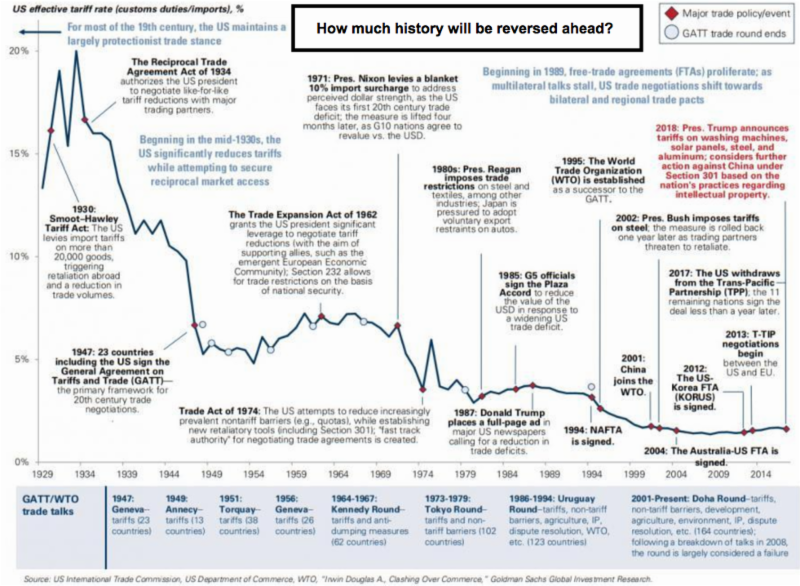Traders tried holding the market together after the first selling wave on Friday. It was reasonable to expect. We believed traders would not take the bait on a Friday, in expectation of new China moves before Monday’s opening, writes Gene Inger in IngerLetter.com.

Fed Chairman Powell’s realistic and balanced assessment on credit and rate plans, along with Treasury Secretary Mnuchin's very diplomatic way of handling gotcha-type questions in an extended interview, only briefly swayed the market to rebound.
And then succumbing and moving to newer lows for the session.
The market did not hold the 200-day moving average either, especially when viewed in an all-stocks basis as opposed to a capitalization-weighted basis.
Bloomberg: Stocks bounced back Monday from a late week sell-off sparked by trade angst.

Our overall forecast anticipated not just the Friday pattern but realized a couple days ago that President Trump would have to double-down to get China’s attention after both Kudlow and Trump inferred it was just a bluff.
The market received that well (Wednesday’s turnaround). That was why I anticipated Trump would have to feel emboldened with the Chinese immediately declaring victory Thursday morning. Hence, it became essential the United States move to reassert its determination.
So sure, trade and tariff issues move the market, and we've identified the likely rebound failures.
The moves are a larger strategy to extract better deals from China (and that goes for other countries too), without getting into trade wars.
Mnuchin did the best job of balancing this while acknowledging we’re not in a trade war, but the potential exists of course.
I remind we already heard from members that a series of steel and component price increases are already filtering through. It’s too soon to reach the inflation (or perhaps stagflation) conclusion, which leaves markets with ongoing outlined uncertainty and diving financials.


















